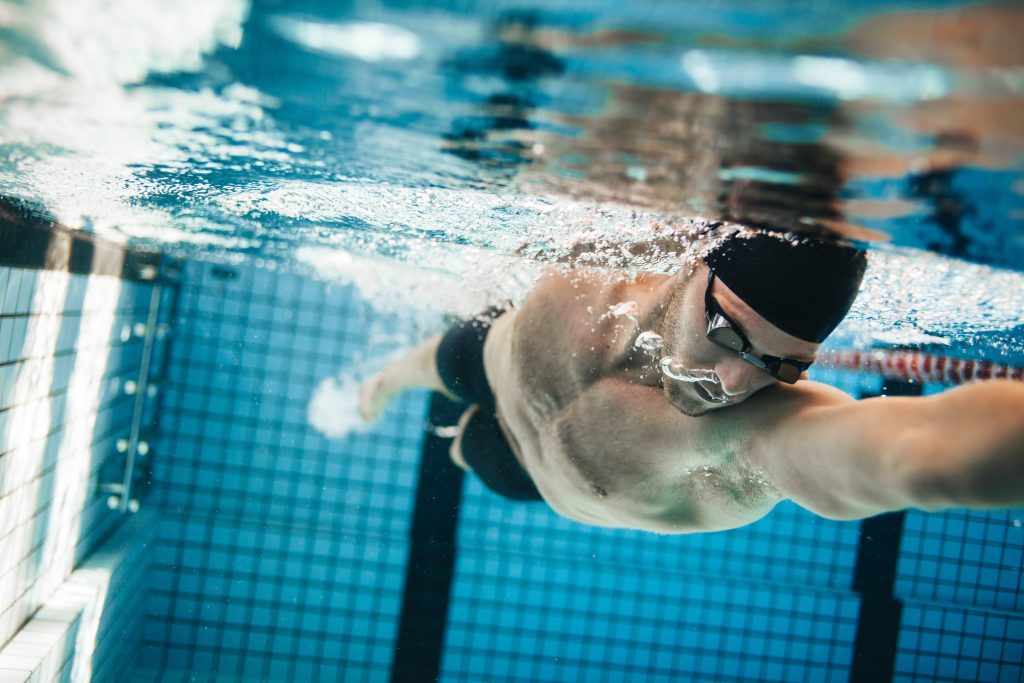In swimming, it is important to distinguish between aerobic and anaerobic sports performance. Maximum exercise activity that takes place within the first two minutes is considered anaerobic if the muscles obtain their energy for the performance predominantly from previously accumulated reserves and thus without the need for an oxygen supply (so-called anaerobic glycolysis). This previously accumulated energy is available to the muscles very quickly (which allows great strength to be achieved), but does not last long. We refer to such sports as weight training. After two minutes of maximum performance, it is necessary to generate energy using oxygen (so-called aerobic glycolysis) (after three minutes of maximum performance, 90 % of the original energy reserves are exhausted). This process is slower (energy production from sugar involving oxygen is slower), so the strength achieved is lower, but it is possible to carry out the given activity over a longer period of time. If the performance lasts longer than two minutes, it is referred to as endurance sport.

Swimming as an endurance sport
Swimming involves endurance competitions over distances of more than 200 metres. The most typical representative of the endurance swimming disciplines is long-distance swimming (crawl swimming). The training of these athletes must be geared towards endurance. This usually comprises ten two-hour swimming sessions per week, supplemented by just two fitness lessons and one athletics lesson per week. In a week, a long-distance swimmer normally swims between 70 and 120 kilometers, which corresponds to around 3,500 to 4,000 kilometers per year. During a two-hour training session, a long-distance swimmer performs around 5,000 to 7,000 shoulder rotations, which corresponds to 50,000 to 70,000 rotations per week and 2,500,000 to 2,800,000 rotations per year.
The shoulder joint is undoubtedly the most heavily loaded part of the endurance swimmer’s body (known as the “swimmer’s shoulder”). To ensure that the shoulder can withstand such an endurance load, several accompanying measures are required (mainly physiotherapy).
What experiences have you had with swimmers and their problems?
Here you can see me – Dr Radek Hart – enjoying my great passion, swimming
The swimmer's shoulder and associated health problems
Swimmer’s shoulder is a common condition among professional athletes. If it is necessary to operate on these, upper capsular reconstruction may be an option. I have published an article on this topic on the Prelomed health platform.